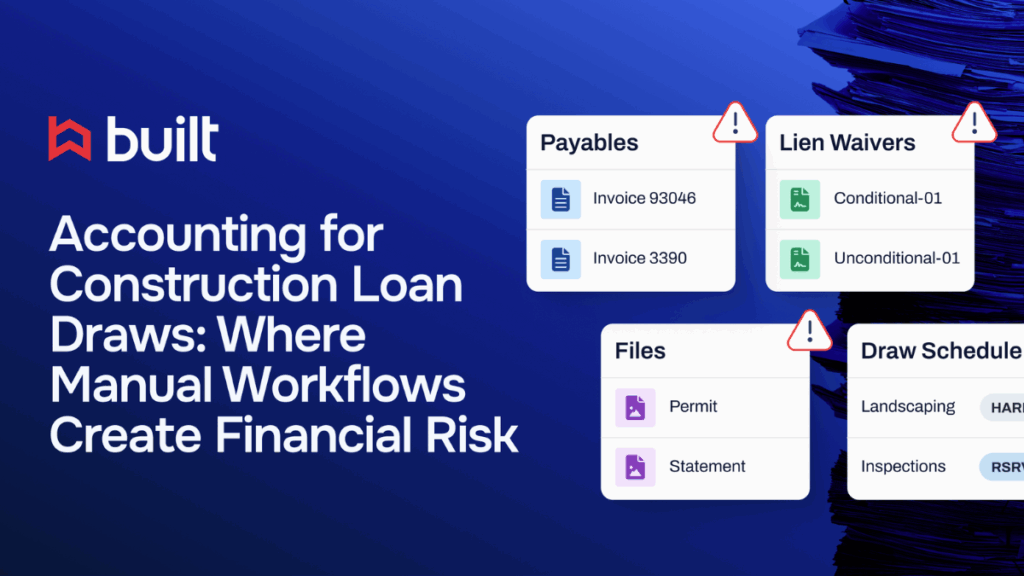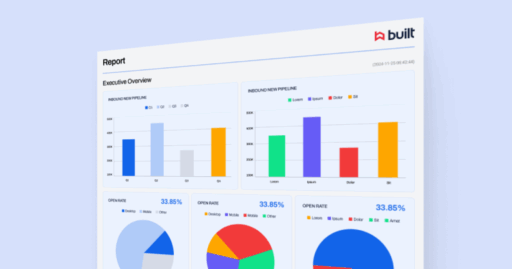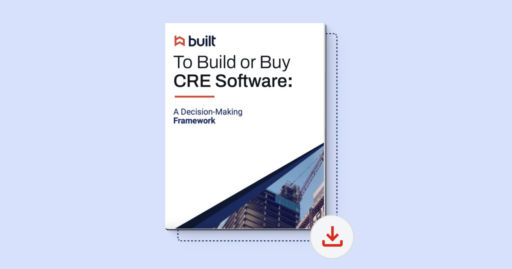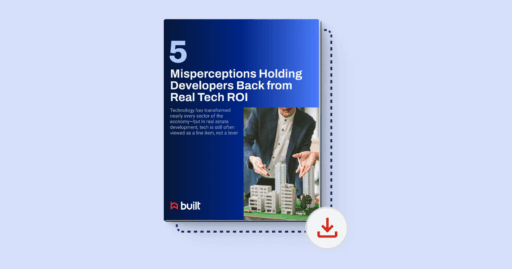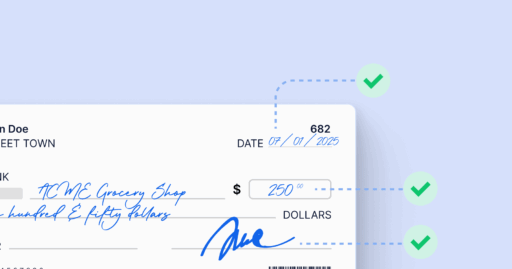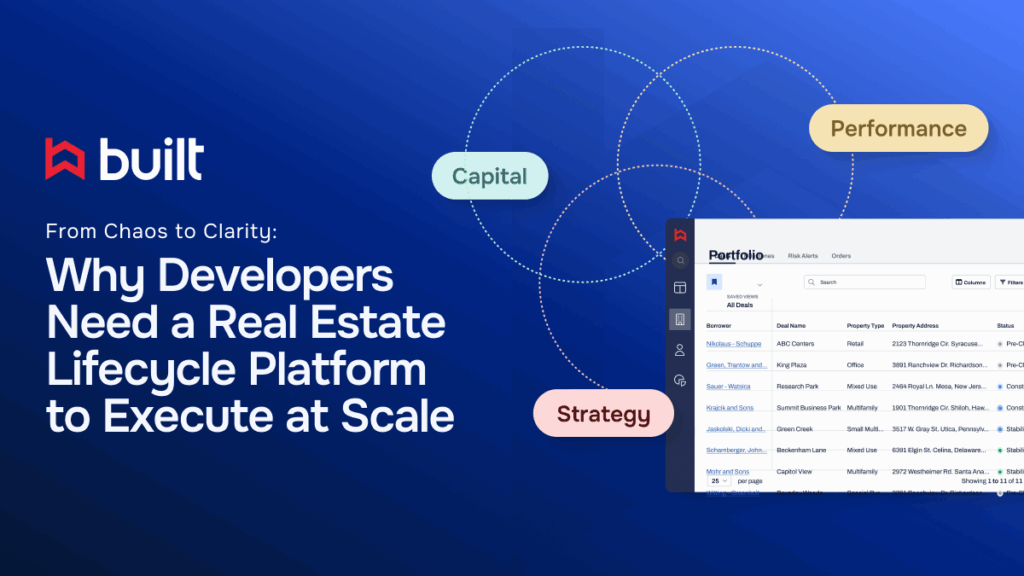
Construction Draw Request Form: from Form to Funding at Scale

You’re not managing one draw. You’re managing dozens across active construction projects, shifting scopes, evolving budgets, and capital partners who expect speed, accuracy, and visibility.
For lean owner–developer teams, the draw request form might seem like just another document. But when it’s inconsistent, incomplete, or buried in someone’s inbox, it doesn’t just delay a single payment. It holds up the entire construction draw process. Funds stall. Inspections lag. Lien waivers go unsigned. And suddenly, your timeline (and your lender’s confidence) is on the line.
In fact, according to PMI, ineffective communication is the primary cause of project failure one-third of the time, and it contributes to negative project outcomes more than half the time. And yet, many teams still rely on spreadsheets and email to manage draw approvals, tools never built for accuracy, auditability, or scale.
The slowdown doesn’t start downstream. It starts right here with the request process.
This article explores the most common breakdowns in construction draw workflows and how high-growth teams are redesigning their draw approval process to move faster, stay compliant, and scale across portfolios.
Why the Construction Draw Request Form Is a Financial Trigger, Not Just a Formality
In multi-project portfolios, the draw request form isn’t just paperwork; it’s also the ignition switch for capital movement.
At its best, it sparks a clean chain reaction: percent complete is validated, supporting documentation is reviewed, approvals move forward, and funds flow to keep work on track. It links budget progress to real dollars, keeping timelines intact, vendors paid, and capital partners aligned.
But when the form shows up as a static PDF, a disconnected spreadsheet, or an email with scattered attachments, the review process begins in confusion, not confidence. Project managers get pulled into back-and-forth exchanges. Draw approvals stall. Inspections are delayed. Lien waivers lag. And trust between borrowers, builders, and lenders begins to erode.
The issue isn’t the draw form itself. It’s the lack of a structured, repeatable construction draw process, especially at scale. And on most teams, that pain hits operations long before finance realizes why funds aren’t flowing on time.
Why Construction Draw Requests Break Down in Multi-Project Portfolios
On paper, the construction draw request process looks standardized. In reality, it’s anything but.
Across a growing portfolio, decentralized processes and inconsistent tools turn what should be a repeatable, auditable system into a fragmented mess. Each project team has its own way of submitting draw packages. One sends PDFs via email, another drops files in a shared folder, and a third copies last month’s Excel tab and hopes for the best.
The result isn’t just confusion, it’s real risk:
- No consistent format means every request requires manual interpretation.
- Incomplete or delayed documents stall disbursements and slow fieldwork.
- Static PDFs and email threads cause version drift; no one’s sure what’s current.
- Manual data entry into spreadsheets invites errors and undermines audit trails.
- Approval chains get buried in inboxes and slip through the cracks.
“No longer having to track subs down for conditional waivers and unconditional waivers after payments being made, because in Built, this is all part of the process . . . it’s also getting us paid a lot quicker from our clients.” —Rod Heisler Construction
At scale, the issue isn’t the form itself. It’s the lack of infrastructure around it. Without standardized workflows, centralized visibility, and purpose-built tools, capital gets stuck. And spreadsheets won’t fix that.
The Role of Project Management in Scalable Draw Requests
In high-velocity development environments, construction project managers do more than track progress: they’re the linchpin of capital movement.
Each draw request depends on their ability to align completed work with budgeted line items, coordinate documentation, and move the package through approval, all while field conditions change daily. But even the most capable PMs hit a ceiling when forced to manage this process manually.
Without structured workflows, project managers become the default gatekeepers. They have to chase lien waivers, email stale spreadsheets, and shepherd approvals through inboxes. The result? Delays that stall disbursements, frustrate contractors, and jeopardize project pacing.
To keep builds on schedule and to keep capital flowing, project managers need tools that mirror their complexity: draw schedules tied to project milestones, document validation baked into submission, and workflows that route automatically based on approval logic and thresholds. With these systems in place, PMs can focus on driving progress, not untangling paperwork.
What a Scalable Draw Request Form Needs to Keep Capital Moving
Even the most capable project managers can’t overcome a broken draw form.
When every request arrives in a different format with missing line items, vague progress percentages, or incomplete supporting documentation, PMs spend more time chasing sign-offs than pushing projects forward.
A scalable draw request form should do more than check boxes. It should embed structure, logic, and controls that keep the draw approval process moving without back-and-forth delays.
Here’s what that looks like in practice:
- Budget Line-Item Tie-Ins: Every disbursement must map cleanly to a defined line in the schedule of values — no guesswork, no gray areas.
- Structured % Complete Fields: Numeric progress inputs that sync with inspection results or field data make validation fast and audit-ready.
- Required Documentation Uploads: Lien waivers, invoices, photos, and certifications should be required at submission, not tracked down via email later.
- Logic-Based Approval Routing: Approvals move automatically through the right stakeholders based on roles and budget thresholds.
- Live Versioning and Audit Trails: A single source of truth for every draw package, every edit, every sign-off. No more “which PDF is the right one?”
When forms are this structured, project managers manage progress, not paperwork. And capital partners trust what they see.
Why Capital Partners Lose Trust in Your Portfolio
What looks like a field delay often starts upstream with draw approvals stuck in outdated, manual workflows.
When requests are routed through inboxes, copied from stale spreadsheets, or stalled by missing lien waivers, the risk goes beyond slowdowns. It becomes institutional.
Capital partners expect draw packages that are complete, traceable, and tied to verified progress. When just one project slips, it can shake confidence across the entire capital stack.
For owner–developers managing multiple deals and stakeholders, inconsistent draw practices quietly erode trust, disrupt capital pacing, and delay closeouts. A simple form error can spiral into missed inspections, delayed disbursements, or JV scrutiny.
Digitizing the draw process isn’t just about speed. It’s about standardizing trust. With complete documentation, structured workflows, and audit-ready trails, capital partners see what’s real and fund with confidence.
Draw Inspections: The Critical Checkpoint for Releasing Funds
A draw request is only as strong as its proof of progress.
Before funds move, lenders and capital partners need confidence that the work claimed matches what’s actually been completed. Inspections are that checkpoint. They’re not a formality but, rather, a safeguard for budget integrity and capital trust.
Yet in high-velocity portfolios, inspections often become a bottleneck. Field teams wait. Reviewers chase down photos. Inspectors juggle disorganized requests across multiple sites, slowing everything down.
Built eliminates that friction. Inspection results are triggered directly within the draw workflow, mapped to specific line items, and tied to percent complete, all with timestamped digital documentation. No separate systems. No guesswork.
When inspections are integrated, you don’t just verify progress, you also accelerate funding. And you create draw workflows built for scale.
How Built’s Digitized Draw Workflows Save Time (and Trust)
In a scaled portfolio, it’s rarely the form itself that breaks the process; it’s everything that happens after submission. When draw requests live in PDFs, shared folders, or inbox threads, small misses become big delays.
Built’s digitized draw workflows eliminate that friction at the source. Here’s how:
Smart Forms, Pre-Filled
No more rekeying budgets or progress updates. Built auto-populates draw packages from your schedule of values and real-time field data, saving hours per request.
Built-In Validation Checks
Missing lien waivers? Expired COIs? Unsupported percent complete? Built flags issues before a draw ever leaves the site.
Logic-Based Approval Routing
Draws move automatically through the right stakeholders based on roles, thresholds, and project parameters with full audit trails for compliance and oversight.
One Source of Truth
Every request, document, and approval is centralized in Built, so there’s no version drift, no inbox digging, and no conflicting spreadsheets.
Stronger Capital Partner Confidence
With timely, standardized submissions, capital stack partners see verified progress and fund faster, building trust across lenders, equity, and JV partners.
Faster Contractor Payments
With Built’s end-to-end workflow, PMs can move from field data to funded in days, not weeks, keeping subs paid and schedules on track.
For owner–developer teams managing active builds across multiple geographies, Built isn’t just a time-saver. It’s a trust-builder and a competitive edge.
Ready to ditch inbox submissions and static forms?
Construction draw requests shouldn’t be a guessing game. They’re financial triggers built to unlock funds, validate work completed, and keep construction projects moving.
But when draw requests are routed through fragmented PDFs, siloed spreadsheets, or inconsistent formats, the risk isn’t just operational. It’s systemic. Approvals stall. Inspections lag. Trust erodes. And project delays become inevitable.
For owner–developer teams managing multiple active builds, the solution isn’t just filling out the construction draw request form more carefully. It’s reengineering the draw approval process from the ground up with standardized formats, required supporting documentation, and a clear audit trail across every line item and project milestone.
Built helps you do exactly that.
With a centralized, compliant, and fully digital draw workflow, you don’t just save time, you also accelerate funding, improve project pacing, and give lenders and capital partners the confidence to keep moving at your speed.
Ready to see how it works? Book a demo and see how Built can transform your draw request process from form to funding.
Construction Draw Request Form (for Portfolio-Scale Developers) FAQs
What’s the biggest bottleneck in most construction draw request form workflows?
Inconsistent formatting and manual approval routing are the biggest bottlenecks in construction draw request form workflows. Even with a solid form, delays creep in when submissions rely on email threads, siloed folders, or missing documentation.
How do we ensure every draw request is complete before it’s submitted?
Use a system that enforces required uploads, like lien waivers, invoices, and certs, before a request can even be submitted. Built’s workflow validation stops incomplete requests at the source.
Can a single draw request template work across multiple project types?
Yes, if it’s dynamic. A standardized template should flex by budget line items, scope, and approval logic without requiring custom builds for every deal.

Mark Murphy leads OGC Sales at Built, where he is responsible for accelerating adoption of payments and standalone solutions purpose-built for real estate owners, developers, and general contractors. He brings deep experience across sales, general management, and operations in technology-driven businesses.
Prior to joining Built, Mark served as General Manager at Apex Service Partners and Operating Executive at Alpine Investors. He also spent over six years at Flexport, where he held multiple leadership roles including General Manager for the South and Northeast regions, and Director & Acting General Manager for San Francisco and Northern California. Earlier in his career, Mark was Chief Operating Officer at Oolong, an INC 500-recognized international trading business.
Mark holds a degree in Mechanical Engineering from Stanford University, where he captained the Varsity Men’s Rowing team.
Related Posts

How Construction Project Tracking Software Can Unlock Portfolio Clarity
